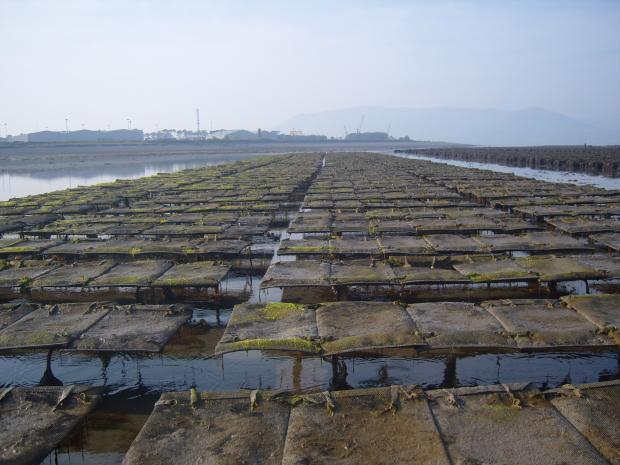Sustainable Mariculture (SMILE)
Shellfish management within AFBI provides scientific knowledge for a number of shellfish issues, with a focus on the use of the Sustainable Mariculture in northern Irish Sea Lough Ecosystems (SMILE) models. The SMILE models have been developed to provide shellfish aquaculture management advice and to address conservation issues from the ecological carrying capacity viewpoint.
Overview

Shellfish Aquaculture in Northern Ireland has expanded rapidly over the last 20 years, the main shellfish cultivated are mussels and Pacific oysters although a small quantity of Native oysters and clams are grown. In 2018, the two main shellfish species in Northern Ireland produced just over 3,000 tonnes valued at over £4 million and directly employs 31 full time and 58 part time staff. The AFBI Shellfish Management section was created in 2000 and a review of Shellfish Aquaculture in Northern Ireland was produced in 2001, shellfish aquaculture information was collated, gaps in knowledge were highlighted and a number of recommendations were forwarded to Fisheries Division. The recommendation to develop carrying capacity models for the five sea lough systems was given high priority and lead to the Sustainable Mariculture in northern Irish sea Lough Ecosystems (SMILE) project.
The SMILE project
The five sea lough systems addressed by the Sustainable Mariculture in northern Irish sea Lough Ecosystems (SMILE) project are:
The two-year project began in September 2004, this was completed with the handover of the SMILE model at an official launch in February 2007 (see SMILE website). The SMILE model has been maintained and developed as aquaculture production and ecosystem management tool. Fisheries Division provide shellfish input and export data supplied by the industry. The input data is used to simulate shellfish harvest, density dependent impacts have been observed in the model and this information could help inform the producer of optimal stocking densities for their sites. Export data from the shellfish production areas is used to validate the model results.
Objectives
This work has the following objectives:
- To establish functional models at the loughs scale, describing key environmental variables and processes, aquaculture activities and their interactions;
- To evaluate sustainable carrying capacities for aquaculture in the different loughs, considering interactions between cultivated species, for normal and alternative cultivation practises;
- To examine the effects of overexploitation on key ecological variables;
- To examine bay-scale environmental effects of different culture strategies.
Recent work
The model has continued to evolve, developing the ecological carrying capacity component to address conservation issues. SMILE has been an integral part of a number of collaborative projects including; the Modiolus Restoration Research group (MRRG) in Strangford Lough with QUB and DOE, the Total Ecosystem Approach to SMILE (TEASMILE) in Belfast Lough with Marine Division and routine Cumulative impact Assessment reports for DAERA. Recent work with the Loughs Agency builds on the original SMILE project and adds various components, in particular integrated catchment and water body management, the” Enhanced SMILE for Lough Foyle” (EASE) project is due for completion in March 2016. SMILE has been applied to investigate the impact of aquaculture on ecosystem health and has provided evidence that aquaculture can provide an ecosystem service, providing top-down control on phytoplankton biomass, relevant to both the WFD and MSFD.